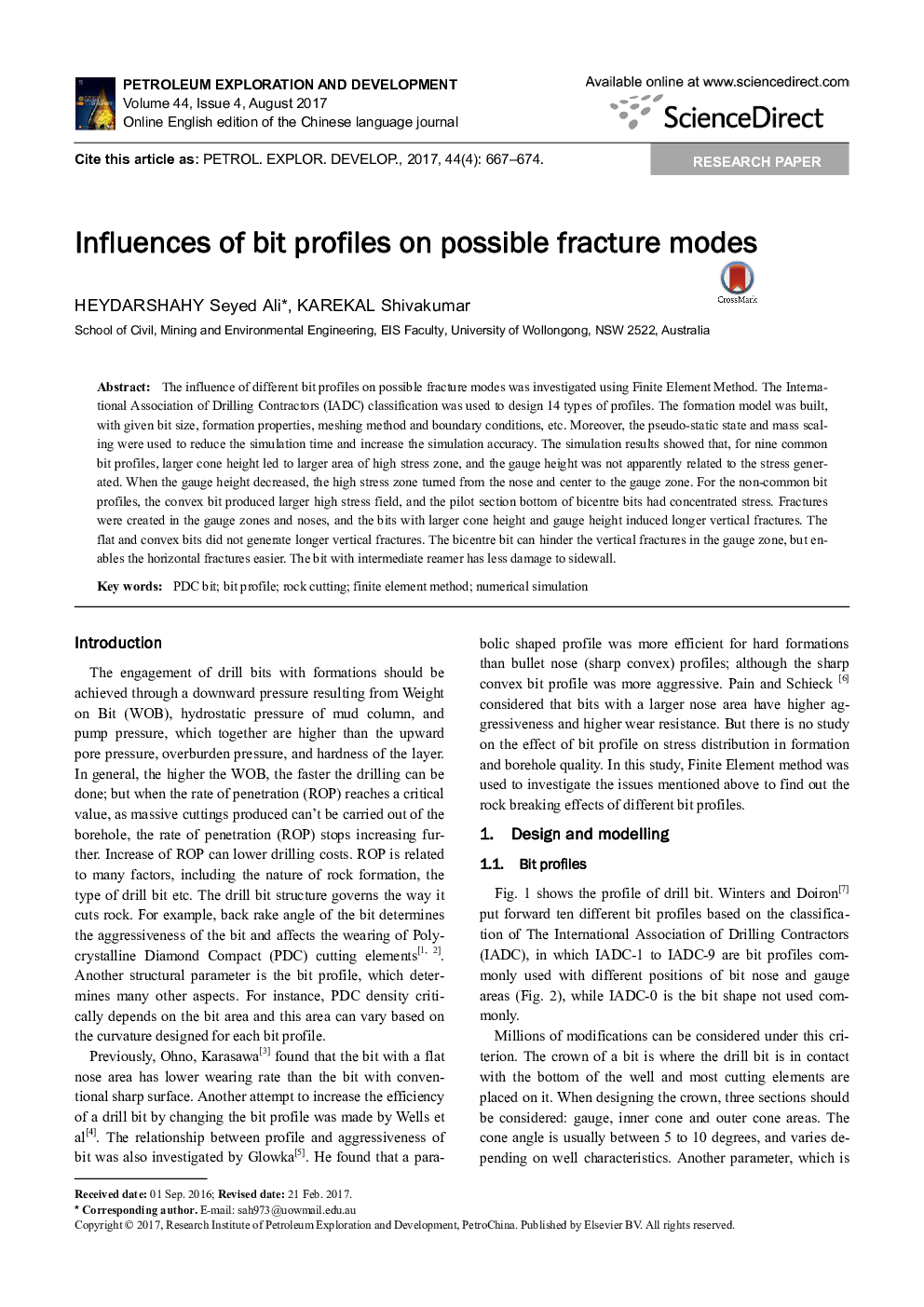| Article ID | Journal | Published Year | Pages | File Type |
|---|---|---|---|---|
| 8912247 | Petroleum Exploration and Development | 2017 | 8 Pages |
Abstract
The influence of different bit profiles on possible fracture modes was investigated using Finite Element Method. The International Association of Drilling Contractors (IADC) classification was used to design 14 types of profiles. The formation model was built, with given bit size, formation properties, meshing method and boundary conditions, etc. Moreover, the pseudo-static state and mass scaling were used to reduce the simulation time and increase the simulation accuracy. The simulation results showed that, for nine common bit profiles, larger cone height led to larger area of high stress zone, and the gauge height was not apparently related to the stress generated. When the gauge height decreased, the high stress zone turned from the nose and center to the gauge zone. For the non-common bit profiles, the convex bit produced larger high stress field, and the pilot section bottom of bicentre bits had concentrated stress. Fractures were created in the gauge zones and noses, and the bits with larger cone height and gauge height induced longer vertical fractures. The flat and convex bits did not generate longer vertical fractures. The bicentre bit can hinder the vertical fractures in the gauge zone, but enables the horizontal fractures easier. The bit with intermediate reamer has less damage to sidewall.
Related Topics
Physical Sciences and Engineering
Earth and Planetary Sciences
Geochemistry and Petrology
Authors
Seyed Ali HEYDARSHAHY, Shivakumar KAREKAL,
